Primark global supply chain transparent with online map
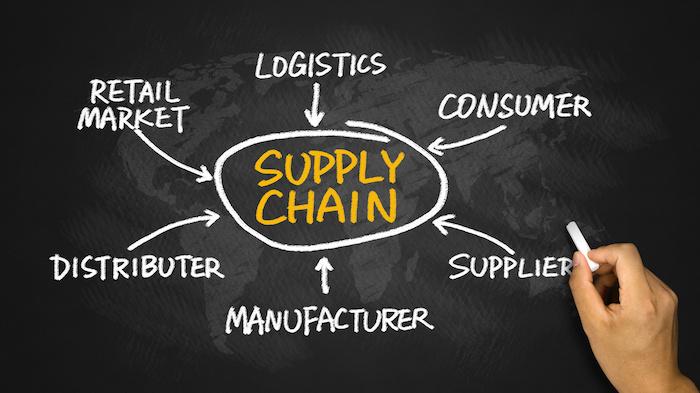
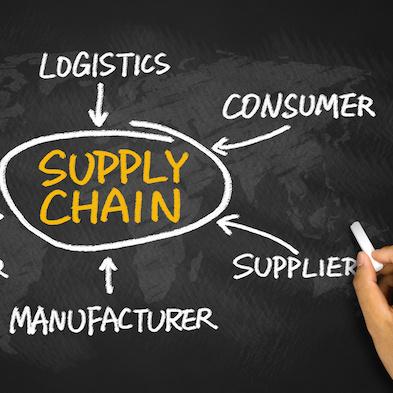
Primark, the budget clothing retailer with 350 stores in Britain, mainland Europe and the US, has published details of its supply chain factories as proof that it does not feed off slave labour.
The information consists of an online map showing more than 600 suppliers’ factories in 30-plus countries and lists the number and gender of the workers involved.
In addition, the company has ditched its claim that listing supplier factories would blunt its competitive edge. It explains that most rival retailers use the same factories and many have named them.
Primark, which has previously denied vigorously that it bought from sweatshop and slave labor factories, says it has intensified its efforts to eliminate the risks of forced employment and has provided hotlines enabling aggrieved or exploited workers to blow the whistle.
Katharine Stewart, Primark’s head of ethical trade, said: “We are opening up about our suppliers to boost transparency and visibility in our supply chain.”
Peter McAllister, executive director of the Ethical Trading Initiative, a global alliance of trade unions, employers and charities promoting workers’ rights, said: “Primark joins the select but growing group of leading companies that disclose details of their supplier factories.
“It is one more step in meeting consumer expectations and we hope that other brands and retailers will follow this example.”
The large brands now sharing supply chain information amid rising regulatory and consumer pressure include the sportswear specialist Adidas, the fashion group H&M and the online retailer Asos.
About 25 million people worldwide are believed to be trapped in forced labor, but the complexity of supply chains makes identification a mammoth task.
Stewart, however, takes pains to emphasize that Primark regards workers’ rights as paramount: “We want to challenge the wrongly held perception that price and ethics are entwined.
Guide to gender equality at work to be published

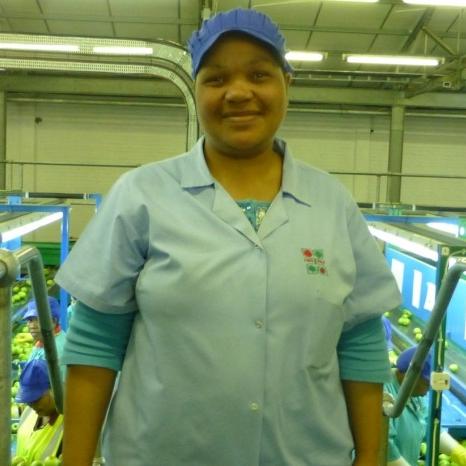
Practical guidance on gender equality at work will be sent to employers all over the world this year by the Ethical Trading Initiative, the London-based alliance of companies, trade unions and NGOs that promotes labor rights.
As part of its campaign, the ETI will issue guidance literature and will work with all interested parties to tackle gender discrimination.
The drive follows intensive research by the ETI, Manchester University and ten large brands.
To date, the areas and the employers reviewed in the investigations are not identified and the examples of unethical treatment are unspecified.
The report emphasized the importance to companies of being committed to women’s rights, partly to improve overall working conditions, said Annie Barber, ETI’s senior knowledge and learning adviser.
The researchers were happy to find that “gender is now firmly on the business radar worldwide”.
This gave “an opportunity for much greater collaboration, both practically and in terms of policy thinking, with knock-on benefits in terms of spending and knowledge”.
Some rights workers were looking into gender pay discrepancy, land tenure, remuneration and ways of taking account of women’s unpaid employment.
There was progress on co-operation with NGOs and trade unions, freedom of association, collective bargaining, the payment of living wages, provision of training and education, dealing with sexual harassment and placing women in traditionally male jobs.
Nevertheless, ETI researchers observed gaps in the information needed for action: “A lot of money and time is being invested, but little is yet known about impact as not enough data has been collected.
“Yet, without data and sharing, it is not possible to influence more widely, make evidence-based decisions and ensure change happens.”
The investigators found women were still victims of discriminatory laws, policies and attitudes and were more vulnerable to labor rights abuses, even though they often made up the majority of workers in supply chains.
They concluded that the two problems needing “much more attention” were excessive hours and irregular employment—crucially, because they disproportionately affect women workers, particularly in the agricultural and garment sectors.
The ETI further highlighted the case for eliminating discrimination attitudes generally if employment policies were to be influenced. It will continue its studies of the problem with Manchester University.
Its final comment: “There needs to be a deeper understanding of and action on gender issues in wider society to successfully bring about change.”
The Value of Values: Priceless


The latest evidence shows two sides of the argument for a triple bottom line approach. It turns out that the best approach for the people-planet-profit formula is, intriguingly, a highly debatable subject.
The idea that the sole purpose of business is to turn a profit has been credited to the economist Milton Friedman. In 1970, he proclaimed that the idea of a corporate executive “spending someone else’s money for a general social interest” was a heretical business concept, a “socialist view that political mechanisms, not market mechanisms” would be driving decision making. In Friedman’s view, acting “responsibly” meant maximizing profits for shareholders, not reducing or forgoing returns for a general social good. That, he said, was the province of government, not business. Corporate social responsibility as we know it today would be, by Friedman’s terms, “irresponsible.”
How times have changed. This would-be czar of capitalism would be astonished to find that 50 years later, market forces, not “political mechanisms,” are calling for a more expansive definition for business, one that goes far beyond the bottom line. Today, executives, professionals, employees, consumers, activists, and a majority of the public at large have formed a general consensus that business is now expected to operate by standards often summed up as ESG: environmental, social, and governance. The costs of pollution and the savings in increasingly cheaper renewable energy as well as the idea that a well-governed company is a profitable one are becoming conventional wisdom, and a major part of the valuation of a company. But while there is a widespread perception that values add value to business, setting the ROI in terms of the social good—the “S” in ESG—is still a work in progress.
How to quantify the impact of taking positions on, and acting on, the key social issues of the day is a question under scrutiny. The latest evidence shows two sides of the argument for a triple bottom line approach. It turns out that the best approach for the people-planet-profit formula is, intriguingly, a highly debatable subject.
Making the Business Case for ESG
Since beginning this newsletter in 2017, I’ve assumed that making the business case for a holistic definition of business is the strongest argument. Aligning a company’s CSR and sustainability initiatives with its mission seems to make obvious sense. A new report adds data and analysis to this belief. It comes, ironically, from a source that Milton Friedman would have presumably approved of: the Cato Institute, a public policy research organization dedicated to the principles of individual liberty, limited government, and free markets. “Thrive: How International Companies are Strengthening U.S. Communities,” written by Daniel Ikenson, an economist at the Cato Institute, and published by the Organization for International Investment, aims to quantify the impact of international companies on America’s economic prosperity, human capital development, and environmental sustainability. It’s a vote for socially aware globalism from a free market perspective (showing just how much traditional definitions are being radically revised in these tumultuous times).
“When a company that has succeeded in its home market expands into the United States, it brings with it much more than the capital needed to operate,” said OFII President and CEO Nancy McLernon. “International companies operating in the United States import world-class workforce training programs, industry know-how that propels U.S. innovation, and a tradition of being part of the communities in which they sustainably operate.”
The report looks at examples of how OFII member companies benefit American communities. Using data from the Morgan Stanley Capital International (MSCI) ESG indices, OFII quantified the relative ESG strength of its members, finding that:
- OFII member companies are global leaders in reducing the carbon footprint of their products, with scores that are more than double the U.S. average.
- OFII members are also leaders in generating social good, exceeding the U.S. average by 17 percent. In fact, over the past decade, international companies have increased their charitable contributions by 123 percent, compared to the U.S. average of 19 percent.
- OFII members are leaders in gender diversity, earning scores that are higher than the U.S. average by 37 percent.
Note the large disparity between domestic and international companies on the “S” in ESG.
Morality moves the needle
On the other hand, there’s a contrary claim that values in business can derive power as much from a moral point of view as from a business case argument. “To Get Companies to Take Action on Social Issues, Emphasize Morals, Not the Business Case,” a recent Harvard Business Review article, starts with the premise that “some have questioned whether we always [my italics] have to make the business case.” The authors asked over 400 U.S. employees across several organizations whether they had ever “spoken up to management about an important ‘social issue’ to try to create a positive change that they thought would benefit others or society.” About half reported raising a social issue such as health, employee treatment, diversity, community issues, or sustainability to management, reports the study. The findings of the study were that “when employees used moral language and framed the social issue as part of the organization’s values and mission, they were far more successful. By tailoring the moral message to also fit with something perceived as legitimate—what the company stood for—it provided cover, license, and an impetus for the manager to put energy into working on the social problem.”
Note that aligning a social issue concern with an organization’s “values and mission” is a secondary step in this morality based approach.
The big win-win
The article references another HBR commentary, “We Shouldn’t Always Need a ‘Business Case’ to Do the Right Thing.” Author Alison Taylor, a veteran consultant, finds that “while there is a business case for integrity, an organization that embraces it must make a conscious decision to prioritize the long term, the intangible, and the existential over the specific and measurable.” She argues against the use of metrics in every decision related to values. “To drive change in organizations, of course we need to measure and understand the financial benefits and costs of ethical initiatives. But if we try to make a case for integrity solely [my italics] using these short-term operational planning tools, we miss a bigger opportunity.”
Taylor’s “bigger opportunity” includes better risk management, deeper employee engagement, reduced regulatory costs, public trust, and a lure to purpose-driven Millennials.” Some of these areas may be more amenable to metrics than others, Taylor explains, and ones that are not must not be pushed down the agenda in an increasingly metrics-dominated world.
Taking a position on any of the big social issues involves making judgements about values, and counting the cost of making a commitment for social good by any company is an important factor at the bottom line. In the future, look for more efforts to expansively define just what that ROI is when taking a stand. And just as companies cannot cost-cut their way to profitability, business cannot and will not only take positions by the numbers. The times demand more vision than short-term accountancy.
Image credit: Ervins Strauhmanis/Flickr
General Mills Brands Join to Improve Farming From the Ground Up


This article series is sponsored by General Mills and produced by the TriplePundit editorial team.
Can macaroni and cheese really revolutionize farming? What about beef jerky or frozen peas? If they are the result of brands combining their resources to promote regenerative agricultural practices, the answer could be yes.
What is regenerative agriculture? Regenerative agriculture is a holistic method of farming deploying practices designed to protect and intentionally enhance natural resources and farming communities. These practices focus on pulling carbon from the air and storing it in the soil in addition to helping the land be more resilient to extreme weather events. Methods include no-till, cover cropping, crop diversity, integrating livestock and maintaining a living root year-round.
Inspired by its natural and organic brands—such as Cascadian Farm, Epic and Annie’s — General Mills is working to advance the adoption of regenerative farming, literally starting from the ground up. “We are out to serve the world by making food people love. And great food starts with healthy soil,” Jerry Lynch, General Mills’ chief sustainability officer, wrote in this series on TriplePundit last year.
Cascadian Farm: Returning to organic roots
Cascadian Farm joined General Mills’ portfolio in 2000. Not only was it one of the first organic brands in the company (along with Muir Glen), but its founder, Gene Kahn, was a pioneer of the modern organic farming movement of the 1970s. Inspired by Rachel Carson’s “Silent Spring,” Kahn started an organic farm in Washington’s Cascade Mountains, specifically focusing on the quality of his soil and protecting nearby waterways.
“Cascadian Farm continues to inspire General Mills today—advancing the values and agricultural practices the brand was founded on, both on our active home farm and throughout the General Mills portfolio as we work to advance regenerative agriculture beyond our organic brands,” Danielle Andrews, senior manager on General Mills’ global sustainability team, told TriplePundit.
One recent example of this alignment is Cascadian Farm’s partnership with the Land Institute to commercialize Kernza. Kernza is a perennial grain whose 10-foot-long roots are able to capture carbon and water, while preventing soil erosion. In addition, General Mills contributed half a million dollars to the Forever Green Initiative at the University of Minnesota to advance research on Kernza and its benefits.
Epic: Utilizing animals to keep fields fertile
Regenerative farming practices include animals as well as crops. Epic, which joined General Mills in 2016, specializes in meat products that are not only sustainably sourced, but also strengthen the land from which they come. Epic’s work promotes the use of ruminants, or grazing animals such as buffalo, cattle and goats, whose stomachs ferment plants and in turn provide rich fertilizer to restore nutrients to the land.
“By simulating the natural movement of animal herds through planned rotational grazing patterns and unleashing the power of ruminants to promote naturally thriving ecosystems, regenerative agriculture can heal previously damaged lands,” Katie Forrest, co-founder and owner of Epic, wrote in Modern Farmer. “Even more importantly, it can reverse previous destruction to our atmosphere. That’s because healthy grasses from holistically managed lands remove carbon dioxide from our air and put it back where it belongs: the soil.”
Annie’s: Educating consumers through packaging
Annie’s joined General Mills in 2014, after 25 years of making responsibly-sourced macaroni and cheese, snacks, soups, condiments and more. Throughout its history, customers have recognized Annie’s most popular products through the brightly-colored packaging featuring Bernie the Bunny.
General Mills used consumers’ relationship to Annie’s distinctive packaging to spread the word about regenerative farming practices in an innovative campaign last year.
Annie’s partnered with two Montana farmers to grow the grain needed for two limited-edition organic products: Honey Bunny Grahams crackers and Elbow Pasta and Cheddar mac and cheese. The packages listed the farmers’ names, location and specific crops used to make the product. The boxes also included information on “why soil matters” and what regenerative farming is. In addition, Annie’s released a mini-documentary online entitled “Our Food Choices Matter,” further explaining the role of soil in sustainable food production.
“Consumers want to know they are making the best choices for their families and want their everyday actions to have a positive impact on the environment,” Andrews told us. “With projects like this, we’re doing the work to partner with our suppliers and farmers on their behalf and their food choices are making a difference.”
Continuing to spread the word
Andrews noted that the results from Annie’s limited-edition packaging campaign were greatly encouraging. “When you start educating consumers that soil and farmland are finite resources, they begin to better understand why the principles of regenerative agriculture are so important,” she explained.
General Mills will continue advocating the importance of healthy soil and sustainable farming practices as an exhibitor at the Natural Products Expo West in Anaheim, California, this week. In addition, this spring General Mills will begin a pilot program with oat farmers to enhance regenerative agricultural production in the regions they source their oats for Cheerios, Nature Valley, Annie’s and Cascadian Farm.
Uniting for a significant impact
With the acquisitions of the aforementioned natural and organic brands, General Mills is now able to make larger-scale moves to improve farming of ingredients across its portfolio, and for American agriculture as a whole.
This influence is best exemplified in the 2018 announcement of the Gunsmoke Farms project. General Mills will convert 34,000 acres in South Dakota from conventional to certified organic farmland by 2020. This will be one of the largest contiguous organic farms in the United States, covering 53 square miles, reports the Star Tribune. The land will first be used to train farmers on regenerative farming practices and to grow wheat for Annie’s products. Through projects like these, General Mills is committed to advance regenerative agriculture practices on 1 million acres of farmland by 2030, the company announced this week.
“At General Mills, we take the outputs Mother Nature and farming communities give us and transform them into delicious, nutritious products for our consumers. If the front end (nature) is not working well, our entire business model breaks down,” Andrews concluded. “It’s exciting to know that because of the breadth of our portfolio of brands, we can make a significant impact that will benefit so much farmland, creating an incredibly positive impact on our people and our planet."
Image credit: meriç tuna via Unsplash
What Carbios’ Technology Means for the Circular Economy


At a time when many companies have set goals that include boosting plastic recycling by 2025, Carbios may have established itself as a key player in the circular economy.
Carbios, a French biotechnology company, is helping to revolutionize plastic recycling. PET (polyethylene terephthalate) plastic, one of the most widely-used packaging materials in the world, apparently can now be broken down at accelerated rates using Carbios’ specialized enzyme technology.
Carbios says it has successfully produced the first PET bottle made with 100 percent post-consumer recycled plastic waste, using a purely biological process. At a time when many corporations have set sustainability goals that include boosting plastic recycling by 2025, Carbios has potentially established itself as a key player in the circular economy.
Breaking down post-consumer PET plastic takes substantial resources for three reasons:
-
PET has a high molecular weight—which is considered good for packaging because it provides strength and stiffness.
-
Another feature of PET is high purity, meaning it’s difficult to break down this type of plastic into its original starting materials.
-
Any food or liquid with acetic acid held within PET packaging compromises the recyclability of the plastic (e.g., products including soda, juice, vinegar, pickled vegetables, fruits, processed grains and cleaning agents).
Efforts to recycle PET aren’t new; the first post-consumer PET bottle was recycled in 1977. Yet the resources needed to recycle PET have been burdensome until Carbios’ latest enzyme technology introduced what could very well become a far more scalable solution.
Why optimizing PET recycling Is significant
Forbes dove into the topic not long ago when it was reported that globally humans buy a million plastic bottles per minute (most often made from PET); and, 91 percent of all plastic is not recycled. Most plastic is accumulating in landfills or as environmental litter and takes hundreds of years to degrade.
The issues associated with the alarming amount of plastic accumulating around the world are not unknown. Carbios’ technological advancement in “biorecycling” is significant as this comes at a time when many large companies are committing to sustainable practices and adopting recycled plastics.
Walmart is one example of a corporation recently setting new plastic waste reduction commitments by increasing plastic packaging circularity. These latest commitments could impact over 30,000 SKUs within Walmart and Sam’s Club’s private labels program. The company is even encouraging other brand suppliers to create similar sustainability-focused targets.
Another example is SC Johnson committing to further reduce its plastic footprint by boosting recycled plastic content in its packaging. Fisk Johnson, Chairman and CEO of SC Johnson, said, “We hope [our efforts] they inspire other companies to take similar steps toward a circular plastic economy, because the planet simply cannot sustain the status quo.”
What Carbios’ breakthrough gives corporations like Walmart and SC Johnson, along with packaging suppliers and many other companies, is a time-saving and cost-effective solution for achieving 100 percent recyclable plastic packaging. This PET recycling technology can make the process easier for companies to reduce plastic waste and close the loop on plastic packaging.
Image credit: Jonathan Chng/Unsplash
Lessons from Collaboration: How One Nonprofit Scaled Up Nutrition Education
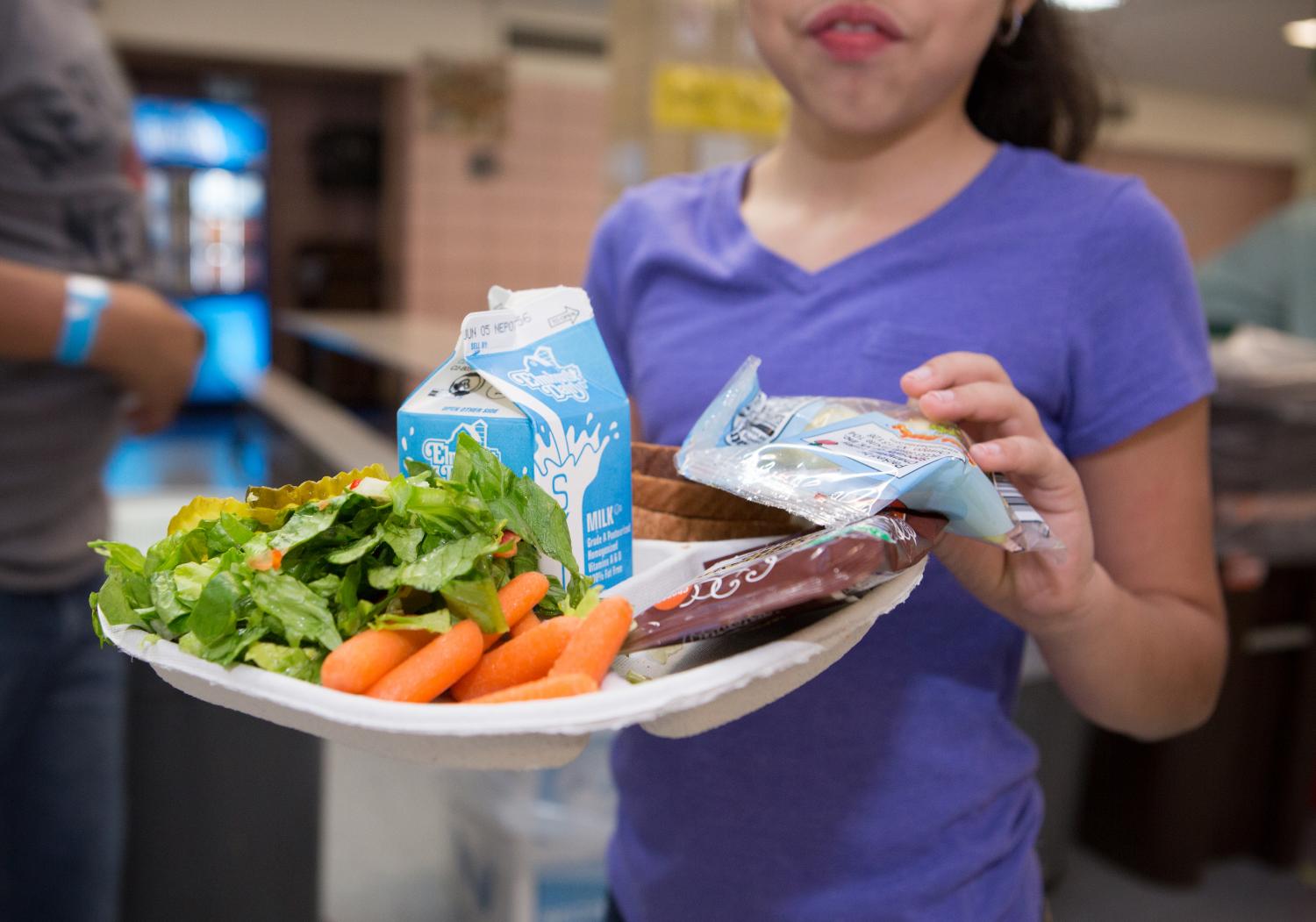
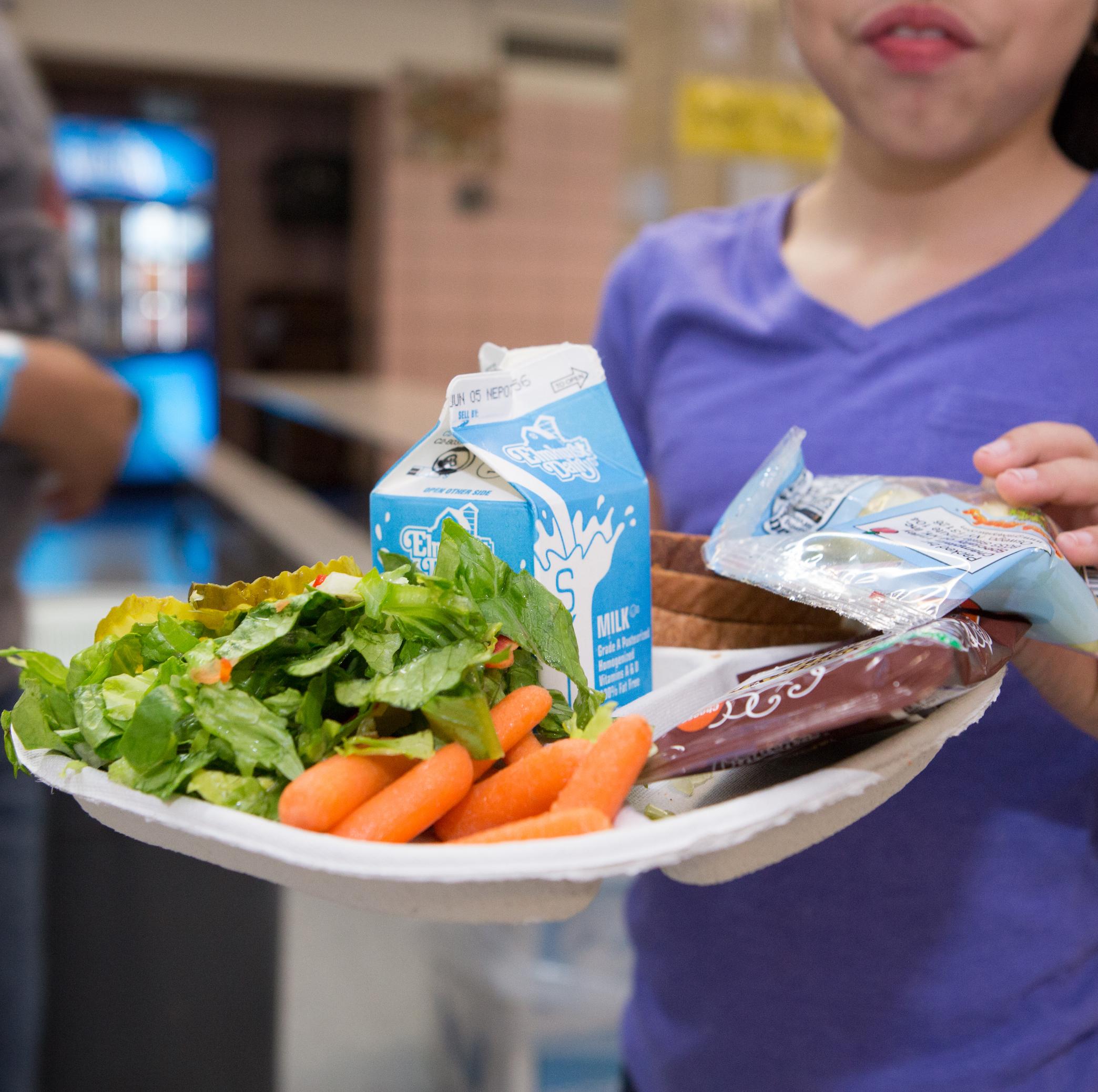
Among its many initiatives, FoodCorps is working with Belfast elementary school in central Maine to increase nutrition and reduce waste in the lunch room.
This article series is sponsored by Walmart and produced by the TriplePundit editorial team.
Corporate charity is branching out from its roots in the traditional gift-giving model. The innovative corporate foundations of today are engaging in transformative, dynamic work with nonprofits to achieve impacts far beyond their initial scope. The collaboration between the Walmart Foundation and the nonprofit organization FoodCorps exemplifies this trend, and it illustrates how companies can lend both their financial firepower and their expertise to help nonprofits scale up their missions.
The FoodCorps nutrition education model
FoodCorps launched in 2010 with the mission of reaching children in school with empowering lessons about healthier eating.
The FoodCorps nutrition program involves the whole school—including teachers, staff and foodservice workers—and often extends to students’ families to create a culture of health. It revolves around hands-on and interactive classroom learning, healthier school meals, school gardens, and lessons that students can apply at home.
The “Corps” part of the program is also a key factor. As an AmeriCorps grant recipient, part of the FoodCorps mission is to support a new generation of emerging leaders. Schools that participate in the FoodCorps program host an AmeriCorps service member, who oversees the program as a school leader, role model and mentor throughout the academic year.
“The program is not just about creating an interest in healthy food,” explains FoodCorps co-founder and CEO Curt Ellis. “It’s really about taking ownership and bringing it home to their families.”
From startup to nutrition education powerhouse
In its earliest years, FoodCorps was a startup with a modestly-scaled base of operations.That changed five years ago, when its innovative, holistic education model caught the eye of the Walmart Foundation. Today, with the help of the Walmart Foundation and other funders, FoodCorps serves more than 160,000 students in both urban and rural areas, across 18 states and Washington, D.C.
“The work has been a two-way street of learning and improvement, not only improving food access for students in need but improving food education,” Ellis says.
Ellis credits the Walmart Foundation’s razor-sharp focus on the FoodCorps mission for the success of the collaboration. He draws a contrast between the Foundation’s approach and traditional corporate giving, which is sometimes aimed at getting the biggest public relations bang for the buck. That kind of funding relationship can quickly cause a nonprofit to veer off track and focus on perceived success rather than concrete achievements, he explains.
“The Walmart Foundation is an incredibly rigorous and high-trust funding partner,” Ellis says. “They also have depth of knowledge on food education and food access. They bring strategic expertise to bear, helping us do our work smarter. The future of solving the problems of healthy food and access require us to be rigorous and innovative. We need to respond to our beneficiaries as customers and respect them fully as customers. If we as an organization want to tackle the problem of healthy food and access at scale, we need to bring the same focus and determination to social-sector work as companies like Walmart bring to the private sector.”
High standards make a difference
Support from the Walmart Foundation enabled FoodCorps to embark on a broad survey of peer-reviewed literature, resulting in the development of a toolkit for action planning and goal setting that emphasizes hands-on learning and high-quality lessons in school gardens.
A recent assessment of the FoodCorps program demonstrates how nonprofits can benefit from this kind of intensive, fact-based analysis. The FoodCorps assessment describes areas of strength and pathways for improvement. For example, it shows that students in schools with the highest rating for hands-on learning are eating three times more fruits and vegetables than children in schools with the lowest rating.
The detailed evaluation also correlates the number of hours that AmeriCorps members spend in schools with a measurable improvement in healthier eating.
FoodCorps is not the only beneficiary of the Walmart Foundation’s rigorous approach. In 2014, Walmart and the Walmart Foundation made a commitment to provide nutrition education to 4 million people over five years, and met the milestone a year early. This was accomplished by working not only with FoodCorps, but also supporting other nutrition programs such as 4-H, Common Threads and Share Our Strength’s Cooking Matters program.
As important as the numbers are, the human factor is still fundamental to success.
Looking at the experiences of students and families who are learning through the FoodCorps program, Ellis shares a story about a student who took a recipe home and created a new meal with both her mother and her grandmother.
“It’s about unlocking the full power of food as this thing that brings us all together,” he says.
Image courtesy of FoodCorps
Wanted: Clarity on SDGs Reporting for Companies and Investors


A coalition of corporate reporting framework organizations is determined to improve disclosure guidelines for the Sustainable Development Goals (SDGs).
For the world to achieve the United Nations Sustainable Development Goals (SDGs) by 2030, the private sector clearly needs to step up its game. Companies want to show that their practices contribute to the SDGs, and investors want to put money behind those efforts. But a lack of consistent guidance on how companies should align their reporting with the SDGs has stymied progress.
The Corporate Reporting Dialogue, a coalition of the major international corporate reporting standard setters and framework providers, is determined to change that. A recent position paper outlined the group’s intention to work together to support the development of better reporting guidelines for the SDGs.
A new SDG investing platform launches
That will be good news for investors, especially impact investors who align their money with the SDGs, as TriplePundit has reported. The most recent effort is COIN, a new conscious investing platform backed by 157-year-old financial services company John Hancock, which launched the platform on March 4. Its mission is to help anyone, with as little as $50 to invest, to invest directly in companies contributing towards the SDGs.
“The SDGs are a fairly new framework to invest in and we wanted to help investors of all kinds to align their own personal values with their investments,” COIN CEO Megan Schleck told TriplePundit.
COIN will offer personalized portfolios aligned with eight Impact areas aligned with the SDGs. These include gender equality, climate action, better health, clean water, reduce waste, quality work, modern cities and shared prosperity.
As Schleck explained, customers own direct shares of the companies in their portfolio, which are chosen by scoring and ranking a company's contribution to a specific impact area through a proprietary methodology aligned with the SDGs. Each company undergoes extensive review on how well their goals, business revenues and corporate conduct to support positive change in various impact areas.
Gaps between SDG intents and actions
A company’s public reporting on sustainability is typically part of such reviews. But impact investors—and sustainability and ESG (environmental, social and governance) investors in general—have long criticized a lack of consistent and reliable data on how companies’ practices have an impact on the SDGs.
A recent study by investment management firm PIMCO on the quality of reporting on SDGs found that companies have a high level of awareness of the SDGs, with 63 percent referencing them in their reporting and 55 percent mapping business activities to specific goals.
Yet according to PIMCO, despite the high awareness, only 12 percent of companies referencing the SDGs set quantitative targets for meeting the goals, indicating that many companies find it challenging to translate well-intentioned support into action.
That can be frustrating to both corporate reporters and investors, which is the problem the Dialogue seeks to address. Last November, as 3p reported, the Dialogue announced two-year project focused on driving better alignment in the corporate reporting landscape. With more companies looking to align performance against the SDGS, providing clarity in this area was a top item on the group’s agenda.
The bases are covered, but much work remains
The Dialogue consists of eight reporting framework organizations that address both financial and non-financial reporting. These are CDP, Climate Disclosure Standards Board, Global Reporting Initiative (GRI), International Accounting Standards Board, International Integrated Reporting Council, Internal Standards Organization (IIRC) and the Sustainability Accounting Standards Board (SASB).
Collectively, the group says it is able to address all SDGs and have already contributed guidance on an individual basis. Such efforts include the SDG Compass from the GRI together with the United Nations Global Compact (UNGC) and the World Business Council for Sustainable Development. The IIRC has issued a report on the implementation of integrated reporting while taking account of the SDGs. More recently GRI and the UNGC have developed a “Reporting on SDGs Action Platform,” an initiative that intends to accelerate corporate reporting on the Global Goals.
Still, despite these and other guidance, there are overlaps between the frameworks as well a number of gaps at the level of the underlying 169 targets of the SDGs “where our frameworks collectively or individually do not yet provide guidance,” as the Dialogue noted in the paper.
This paper describes the Dialogue’s goals:
"To enable effective and efficient capital allocation for the benefit of companies, investors, and society. This includes providing frameworks that measure progress toward achieving the SDGs and providing frameworks that enable a better understanding of the link between the SDGs and company financial performance and risk.”
With reliable data flows capital
According to the U.N., achieving the SDGs by 2030 will require a total annual global spend of $5 trillion to $7 trillion, with an investment gap in developing countries of about $2.5 trillion.
Therefore, the more reliable that companies’ information is, the more likely that private capital will flow towards projects that can help organizations achieve the SDGs—at least, that’s the hope.
If not, other initiatives are already underway to lend clarity to how the SDGs' progress is measured. In January, as 3p reported, the non-profit organization Verra launched the “Sustainable Development Verified Impact Standard,” in response to investors’ frustration with misleading claims around SDG impacts. The standard sets out criteria for how a project must demonstrate to the satisfaction of a third-party assessor that they advance the SDGs.
COIN’s Schleck agrees that while it is difficult to measure the SDGs’ ongoing impact, the forward march of socially responsible investing is unstoppable. Even if the metrics landscape is evolving, she says it’s important to provide options now to investors.
“We think it is critical for people to start using their money to advocate for their values and to hold companies accountable for their practices,” she said.
Image credit: Global Festival of Ideas for Sustainable Development/Flickr
Coal Ash Report Another Reason to Shy Away from Fossil Fuels


The impact that coal ash disposal has on groundwater supplies provides the businesses community with yet another reason to demand safer, more sustainable sources of electricity from their local utilities.
Recent news about the impact of coal ash disposal has on groundwater provides the businesses community with yet another loud, strong reason to demand a more healthful and sustainable electricity supply from their local utilities. However, as awareness of global pollution problems grow, businesses with a clean power profile should not rest on their laurels.
In other words, ditching coal is just one of several high-profile areas in which businesses can take meaningful action on global environmental challenges.
The coal ash problem
For all the coal burned in U.S. power plants, the nation had no coordinated plan for the safe, sustainable disposal of leftover ash until the EPA proposed new rules in 2010.
Typically, coal ash is stored in open lagoons. The new rules did not eliminate that option They were simply designed to make lagoon storage less risk-prone. These rules were aimed at preventing the “leaking of contaminants into ground water, blowing of contaminants into the air as dust, and the catastrophic failure of coal ash surface impoundments.”
It appears to be a case of too little, way too late. The new rules were finalized in 2015 but coal stakeholders won a series of exemptions to some of the provisions, and the legal battle continues to this day.
Meanwhile, the EPA under the Trump administration has continued to revise the 2015 ash disposal rules.
In a statement published last year, newly minted EPA chief Andrew Wheeler — formerly a lobbyist for Murray Energy and other leading coal stakeholders — explained that the amendments are designed to “provide states and utilities much-needed flexibility in the management of coal ash.”
The coal ash chickens come home to roost, in groundwater
In the latest development, the organizations Environmental Integrity Project and EarthJustice surveyed information from 265 coal ash disposal sites in 39 states.
The group found that “91 percent of U.S. coal-fired power plants with monitoring data are contaminating groundwater with unsafe levels of toxic pollutants.”
In a press release, the organizations noted that the first-of-its-kind data review had never been done before, because prior to 2015 there was no reporting requirement for coal power plants.
Here is the key finding:
“…the groundwater near 242 of the 265 power plants with monitoring data contained unsafe levels of one or more of the pollutants in coal ash, including arsenic, a known carcinogen, and lithium, which is associated with neurological damage, among other pollutants.”
The other 23 power plants were exempt from monitoring, either because their coal ash dumps closed before 2015 or they earned an extension.
The report further notes that “many of the coal ash waste ponds are poorly and unsafely designed, with less than 5 percent having waterproof liners to prevent contaminants from leaking into the groundwater, and 59 percent built beneath the water table or within five feet of it.”
The end of coal, and natural gas, too
Now would be a good time to call your local utility, find out if it is still sourcing your electricity from coal power plants, and encourage them it to find more sustainable alternatives.
Don’t fall for the natural gas trick, either. Natural gas provides for a cleaner burn at power plants, but shareholder pressure is already building on companies to do a better job of disclosing risks and impacts related to natural gas operations at the source point.
Fracked or not, fossil natural gas carries a heavy load of baggage including water resource issues as well as air pollution and greenhouse gas emissions from the wellhead and all through the distribution network.
Public opposition to new gas pipeline construction can also ripple out and create a negative impact on businesses that use natural gas.
The good news is that renewables are beginning to push both natural gas and coal out of the power generation market. Gas is also beginning to lose its grip on heating, cooling and cooking. Any nudge from the business community helps to accelerate that trend.
The beginning of action
The urgency of today’s energy transition is already raising awareness that every business can make a contribution to change.
Sometime within the foreseeable future, the public will begin to take clean power for granted. Businesses aiming to raise their sustainability profile will have to look around for another avenue of action.
The plastic pollution problem provides one good example in which every business can step up and stand out, simply by adjusting their supply chain decisions.
Another emerging example is an old standby for corporate action: tree planting.
Planting trees may seem like old hat, but a new NASA study is shining a spotlight on the impact of broad, large-scale tree planting efforts.
Back in 2016, NASA reported that organized tree-planting activities were showing up in satellite imagery.
The new NASA tree study, reported last month, confirms the trend:
“Data from NASA satellites shows that China and India are leading the increase in greening on land. The effect stems mainly from ambitious tree planting programs in China and intensive agriculture in both countries.”
According to NASA, thanks to human activity “the world is literally a greener place today than it was 20 years ago.”
Clearly, tree planting programs alone are not sufficient to counterbalance the impact of greenhouse emissions.
Nevertheless, the good news indicates that human activity — and sustainable business planning — can solve problems as well as create them.
As for coal ash, leakage from lagoons into groundwater is only part of the problem. Catastrophic coal ash lagoon failures, such as those occurring in North Carolina and Tennessee, provide businesses with yet another business case to advocate for clean power at the local level.
Image credit: Ins1122/Flickr
Vacation Rental Industry Generating More Positive Social Impact


Travelers participate in a “Surf With Purpose” Social Impact Experience in Cape Town. Each lesson provides one month of surf therapy for a local child.
$169.7 billion. That’s how much the global vacation rental market is expected to be worth this year, up from $100 billion just three years ago (FutureStay). Fueled by major players like Airbnb, Booking.com, and Expedia (which owns HomeAway and VRBO), the industry has changed what travel looks like today. These vacation rental giants are now looking to corporate social responsibility (CSR) – specifically, social impact – to better the communities surrounding their properties.
A new generation of travelers
Young adults have been a driving force behind the increase in vacation rentals. Seventy-four percent of travelers between the ages of 18 and 34 have used a vacation rental service, compared with 38 percent of Gen X and 20 percent of Baby Boomers (according to VRMintel). Experts predict vacation rentals will only grow in popularity as more of Gen Z grows old enough to plan their own travel.
“More than three quarters of these newly independently vacationing Gen Z’ers have already stayed in a vacation home, cabin or condo at some point in their lives, making them far likelier than their parents to consider vacation rentals a primary lodging option as they continue to mature,” said Melanie Fish, HomeAway travel expert, in a 2018 press release.
Those young travelers aren’t just booking their vacation accommodations online – they are constantly sharing their thoughts and experiences via social media. According to a 2017 Cone report on Gen Z and CSR: “This generation is a force to be reckoned with, using their digital devices to spread social and environmental messages far and wide. But they’re not going it alone – they expect companies to be their partners in change.”
It’s all about the experience
To create this social change desired by younger travelers, Airbnb launched Social Impact Experiences. These travel add-ons, booked through the Airbnb platform, allow guests to participate in a unique activity such as hiking L.A.’s Runyon Canyon with rescue dogs, or surfing in Capetown. Airbnb waives all its fees for these excursions, so 100 percent of the proceeds benefit the nonprofit organization hosting the activity. The aforementioned Experiences, for example, benefit Free Animal Doctor, which funds veterinarian bills for pets in need, and Waves for Change, a surf therapy program for youth affected by trauma and violence, respectively. According to Airbnb, some participating nonprofits have earned upwards of $50k a year from hosting these Social Impact Experiences.
Not only are the nonprofit groups earning much-needed funds from travelers booking these excursions, but they are also gaining visibility through guests posting about their experience on social media. The more “Instagrammable” the experience, the better. After all, who wouldn’t want to learn more after seeing someone’s post about a sea turtle rescue in Costa Rica or a street art tour of Rome?
Funding the future of responsible tourism
According to a 2018 study from Booking.com, almost half (47 percent) of travelers said they were inspired to select more sustainable travel options after “seeing the positive effect that sustainable tourism can have on the local people.”
To support innovations in responsible tourism, Booking.com has launched a series of programs, including the Booking Cares Fund, Labs and Booster. These provide startups, NGOs and other groups with education and financial assistance to make significant improvements in the social impact of travel. As the Booking Cares website states, “We champion sustainable tourism changemakers and support their work to strengthen local communities, to preserve and promote culture, to help disperse tourism more evenly and to protect our valuable natural resources.”
Airbnb has committed $1 million to expand community-led, socially responsible tourism in Africa. Projects include Airbnb Africa Academy and last fall’s Africa Travel Summit. During the Summit, Airbnb host Ntsiki Nconjana gave the following response when asked to complete the sentence “To me, healthy tourism in Africa means”:
“[To me, healthy tourism in Africa means] understanding the real meaning of hospitality, Ubuntu—I am because you are—embodies that.”
Image credit: Airbnb
Kraft-Heinz Can’t Ketchup with Millennials—And It's Not Alone
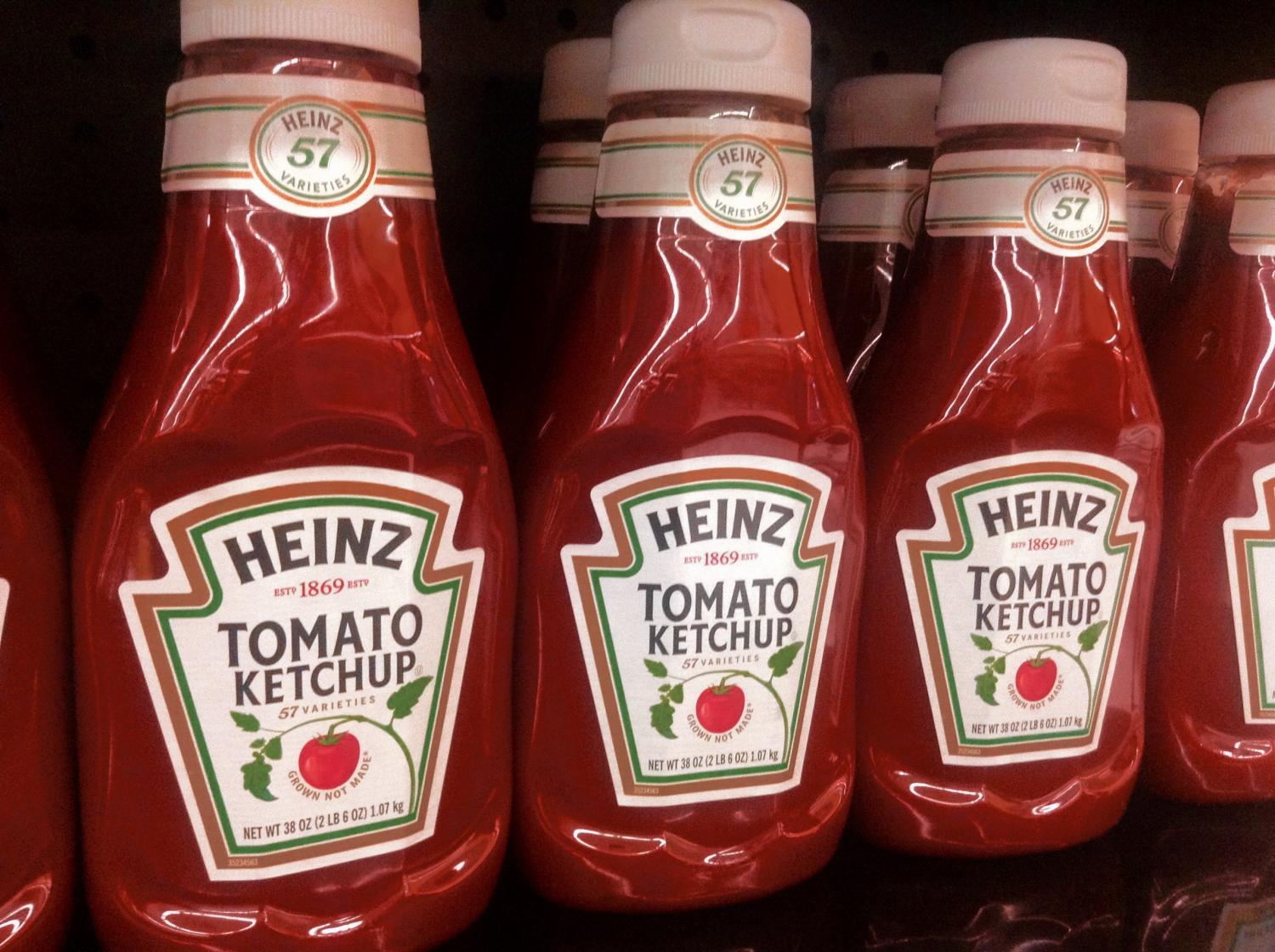
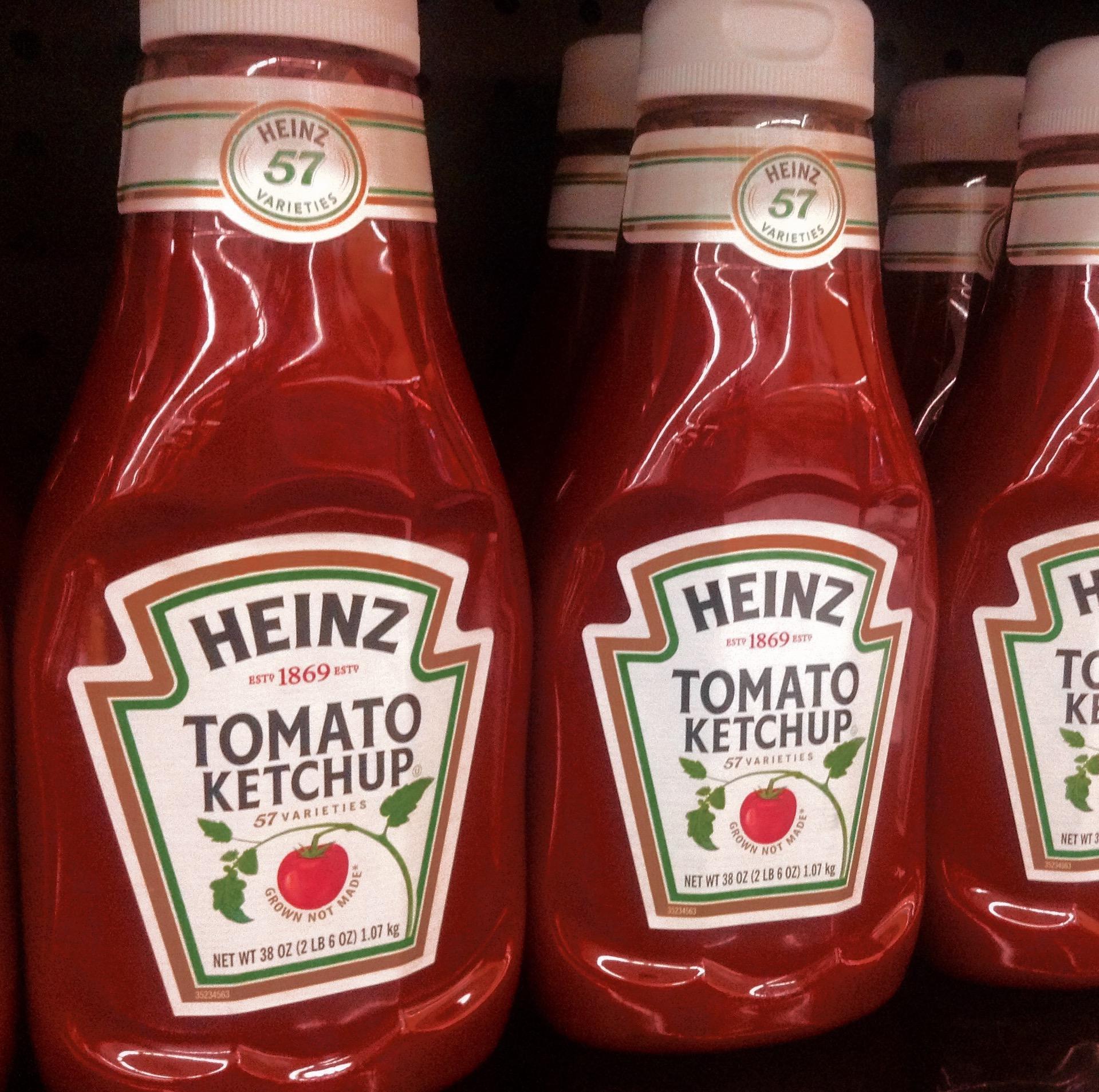
The missteps that led to a $15.4 billion asset write-down at Kraft-Heinz could be considered a warning sign of changing consumer preferences, which have thrown off other entrenched brands in recent years.
The Brazilian private equity firm 3G Capital bought food processing company H.J. Heinz in 2013. Together with Warren Buffett’s Berkshire Hathaway, the company merged Heinz with packaged foods giant Kraft two years later. Things looked promising at first, but a recent spotlight on the company is exposing weaknesses in 3G’s cost-cutting strategy. Over the past two years, Kraft-Heinz shares have fallen by more than 30 percent while the S&P 500 conversely gained 30 percent. Last week, the company suffered a $15.4 billion asset write-down, resulting in a $2.7 billion loss for Berkshire Hathaway.
The missteps that led up to last week’s announcement could be considered a warning sign of changing consumer preferences, which have similarly sidetracked other long-entrenched brands, including Anheuser Busch-InBev and L Brands’ Victoria’s Secret.
The beginning of trouble for Kraft-Heinz
The Kraft-Heinz merger cost 3G Capital and Berkshire Hathaway $62.6 billion, a price tag that Warren Buffet now admits was too high. At the outset, the move was designed to diversify both companies. Heinz had a wide global presence, while Kraft conducted 98 percent of its business within North America. Partnering with Heinz gave Kraft the potential to expand into foreign markets with its classic American brands. Kraft scratched Heinz’s back by providing access to its large economies of scale in North America, adding up to a predicted $1.7 billion in combined cost savings.
3G Capital planned to further improve operating margins at Kraft-Heinz with the implementation of zero-based budgeting. This accounting method involves justifying every expense each year, a strategy that ultimately starved the company’s brand names of research and development. R&D costs fell from $120 million in 2016 to $93 million a year later. The company also slashed marketing expenditures, leading many to conclude it was overly reliant on brand recognition. It also failed to keep pace with millennials’ tastes for healthy, natural foods: over $4 billion of Kraft’s total $18 billion revenue in 2016 came from cheese—a dangerous position for a company catering to the generation blamed for killing American cheese.
Dwindling love for Bud
Anheuser Busch-InBev, the creator of Budweiser and Bud Light, has faced similar difficulties in keeping up with new consumer preferences. Research indicates that millennials are more likely to drink wine or spirits than beer, while Generation Z is barely drinking at all.
As preferences continued to shift, AB-InBev’s two largest brands suffered slipping sales throughout 2018, though premium beers such as Shock Top and Goose Island saw an uptick in revenue.
In a recent interview with Business Insider, Chief Marketing Officer Marcel Marcondes outlined AB-InBev’s plans to appeal to younger generations with low-carb, organic beers. The company announced several new products recently, such as Budweiser Select 55, a beer with only 55 calories. The Budweiser Reserve Collection takes an untraditional route by flavoring Budweiser with Jim Beam, drawing in people who favor spirits.
The secret is no longer safe
L Brands’ once shining star, Victoria’s Secret, has been another victim of new consumer appetites. The company’s stock lost 55 percent of its value in 2018 despite it being a great year for consumer spending. Sales were down 5 percent comparing August 2017 with the same month in 2018, even as the company increased promotional expenses. Victoria’s Secret still holds a place in the hearts of millennial and Gen Z women, according to a 2018 retail survey from Condé Nast and Goldman Sachs, but as we can see in Kraft-Heinz’s debacle, consumer sentiment does not pay the bills.
The company has been slow to form itself into a brand with which millennial women can relate. Victoria’s Secret built its business around cleavage-shaping bras, an image that most women are straying away from. The new Dream Angel collection is designed to align its luxury brand with young women’s preference for bralettes. Is it already too late for the company to pivot its product offerings?
The bottom line
Companies like Kraft-Heinz, AB Inbev and L Brands are not alone in their struggle to keep pace with changing consumer preferences. As documented in a recent report from the environmental nonprofit CDP, some of the world’s most recognizable brands—including Coca-Cola and Unilever—find themselves in a similar situation. As brands continue to navigate these rapidly changing waters, high-profile shakeups are likely to continue.
Image credit: Mike Mozart/Flickr